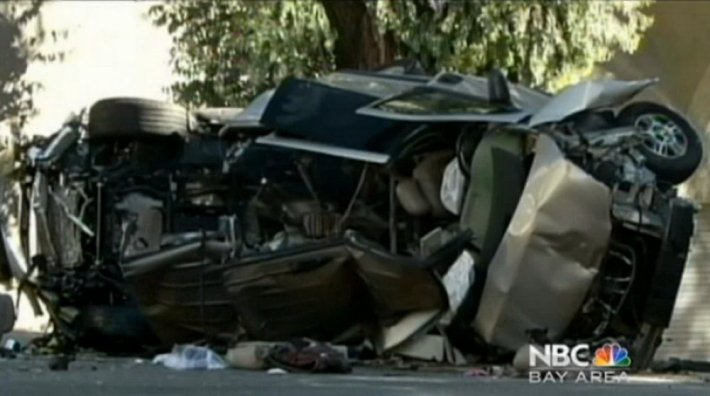
The SFMTA wants to legalize life-saving speed enforcement cameras, and plans to campaign for a state law that would enable San Francisco to install them, the agency's director of government affairs, Kate Breen, said today.
California currently has no law to allow and regulate the use of speed enforcement cameras, though red-light enforcement cameras are allowed. Speed cameras have been proven to reduce driver speeding, traffic crashes, and fatalities in cities around the U.S. and in other countries. Notably, since France adopted them about a dozen years ago, speed cameras are credited with saving more than 15,000 lives throughout the country.
The SFMTA, however, plans to take a tepid approach in its requests from the governor and the state legislature. Breen told the SFMTA Board of Directors that the agency will be seeking to authorize speed camera use only in areas around schools and senior centers, and that the legislation would also "de-criminalize citations" and set a "$100 flat fine." The bill would have to be authored by a state legislator such as SF's recently-inaugurated Assemblymember David Chiu, a former supervisor.
The limitations, Breen said, are mainly aimed at making the legislation palatable for Governor Jerry Brown, who is generally wary of raising fines. In September, Brown vetoed a bill that would have increased fines for dangerous driving in school zones and given the revenue to safe street improvements.
The SFMTA, said Breen, hopes to craft a proposal that "we can build a coalition around, that doesn't necessarily engender out of the gate what we've seen, as practiced by the governor, his propensity to want to veto those things that really raise fines so significantly that the average motorist or person who is receiving one of these citations is unduly burdened."
New York City was recently enabled by its state legislature to roll out speed cameras, but school-based restrictions on where and when they can operate mean that many locations prone to dangerous speeding are ineligible for camera enforcement. Advocates have been pushing to loosen the restrictions.
The benefits of speed cameras are clear. A 2010 meta-study of dozens of research papers on speed cameras found a uniformly positive effect on street safety, with a 30 to 40 percent reduction in crashes that cause serious injury or death following the rollout of most programs.
After Chicago implemented speed cameras last summer, the city reported a 43 percent drop in speeding near camera locations within the first week. At some locations, the number of speeders dropped as much as 99 percent.
In SF, speed cameras are one of the recommended tools in City Hall's official WalkFirst Strategy to cut pedestrian injuries, which ranks the measure as "highly effective."
As in NYC, Breen said the SFMTA's campaign for speed cameras and lower speed limits (under the slogan, "Twenty is Plenty") will be framed in the context of Vision Zero -- the initiative to end to traffic deaths.
"Lower speed limits combined with appropriate enforcement really is the key, along with engineering and education, to achieving the goals of Vision Zero," said Breen.




